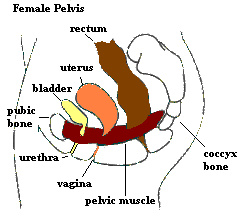Fairly often an important test called a cystometrogram (or urodynamics) is needed. To do this, a small tube called a catheter is passed through the urethra to measure the pressure inside the bladder. This pressure is measured as the bladder is filled with fluid.
Sometimes this test will show spasms of increased pressure, a condition called an ‘unstable bladder’, which is one cause of frequency and urgency. This is one of the things that can happen when BPH obstructs the urethra, and there is a good chance that it will improve after an operation on the prostate. However, there are other reasons for having an unstable bladder, and if it is not the result of BPH, a prostate operation will not improve it and might even make the symptoms worse.
Measuring the pressure while urine is being passed is also important. A poor flow is usually caused by blockage from BPH. The bladder has to work harder so the pressure in the bladder is higher than normal. However, sometimes a poor flow results not because of obstruction by the prostate, but because the bladder itself is weak – in this case the bladder pressure will be less than normal. This is another condition that will not improve after an operation on the prostate.
 Sometimes the opposite might occur – the bladder will work very hard indeed, producing such a high pressure that the actual flow rate will be fairly good. Then a prostate operation is very important.
Sometimes the opposite might occur – the bladder will work very hard indeed, producing such a high pressure that the actual flow rate will be fairly good. Then a prostate operation is very important.
Having a cystometrogram is not very pleasant as it involves having a catheter passed into the bladder, and usually another tube is put into the back passage. You are joined up to a rather complicated looking recording machine. It is a little uncomfortable having the bladder filled up, and then passing urine with a tube still in the bladder. For this reason, it is usually only advised with prostate disorders if an operation is being considered and when results from the other simpler tests are not completely clear. It is then very important, as it avoids the wrong treatment being given.
A new method of performing a cystometrogram is being used in a few hospitals. The tubes are connected to a small portable device, attached to a belt. The patient can walk about and the measurements are done for several hours as the bladder fills and empties naturally during normal activities. This is called ambulatory urodynamics and may be used more widely in future.
